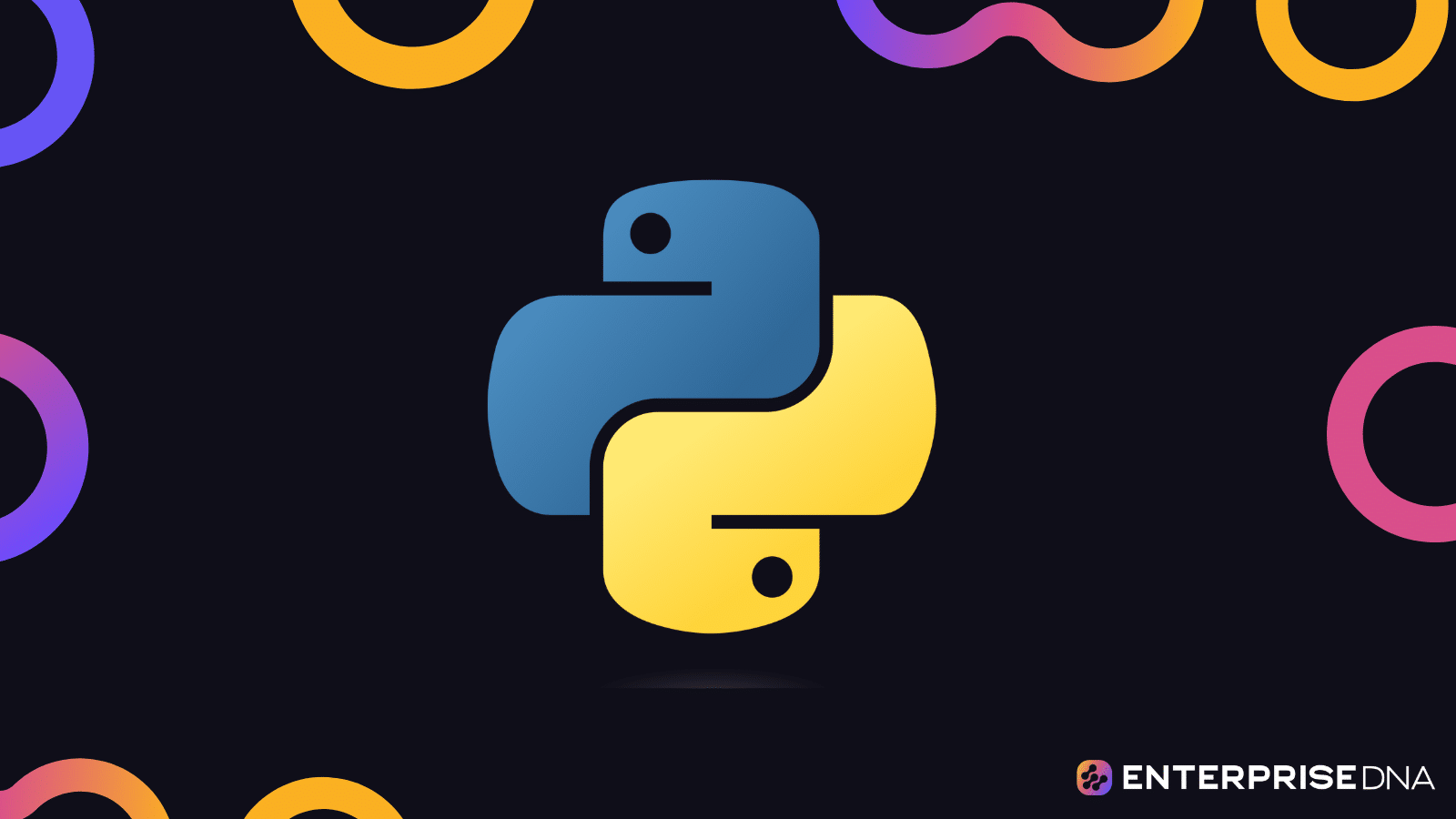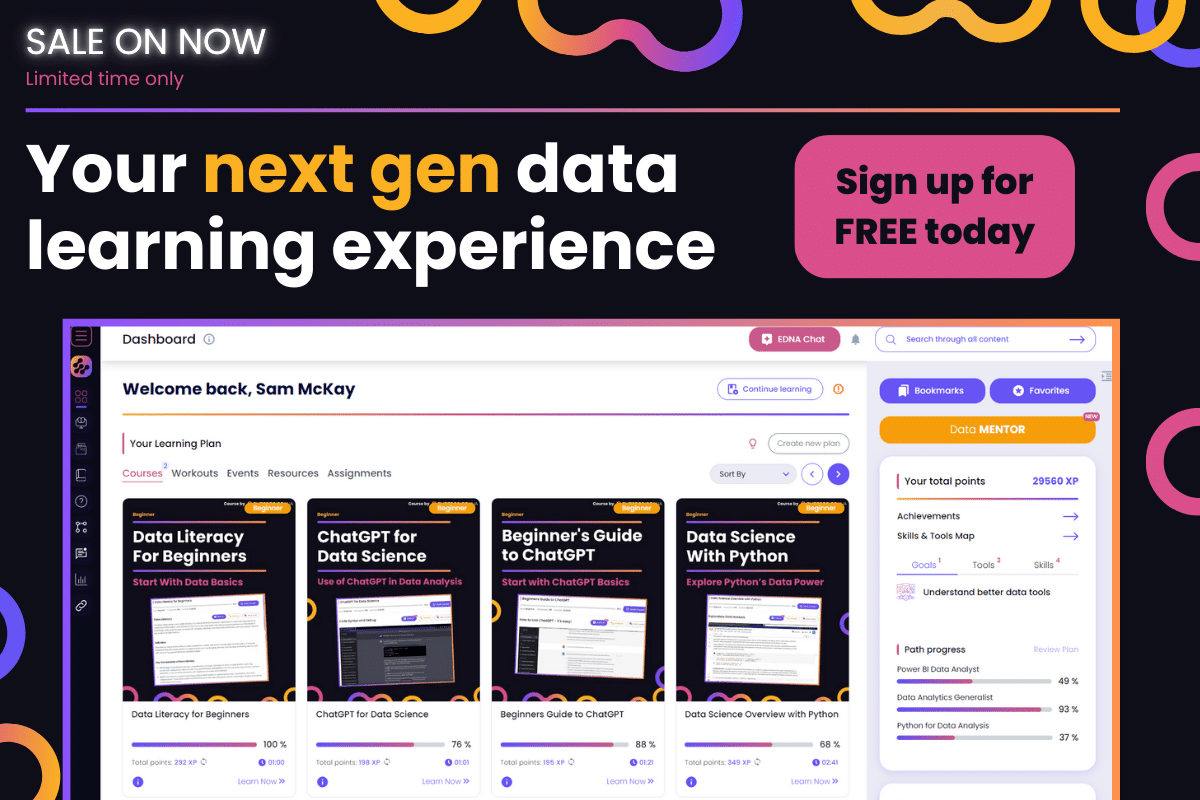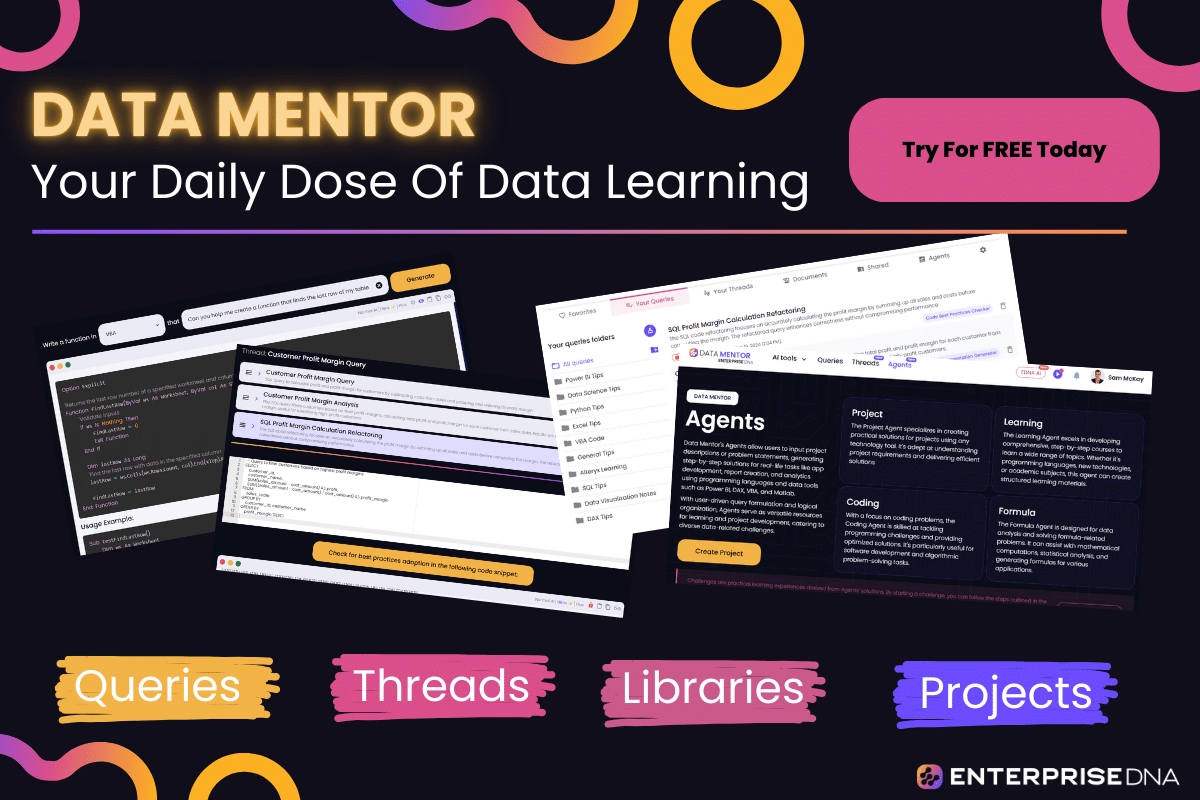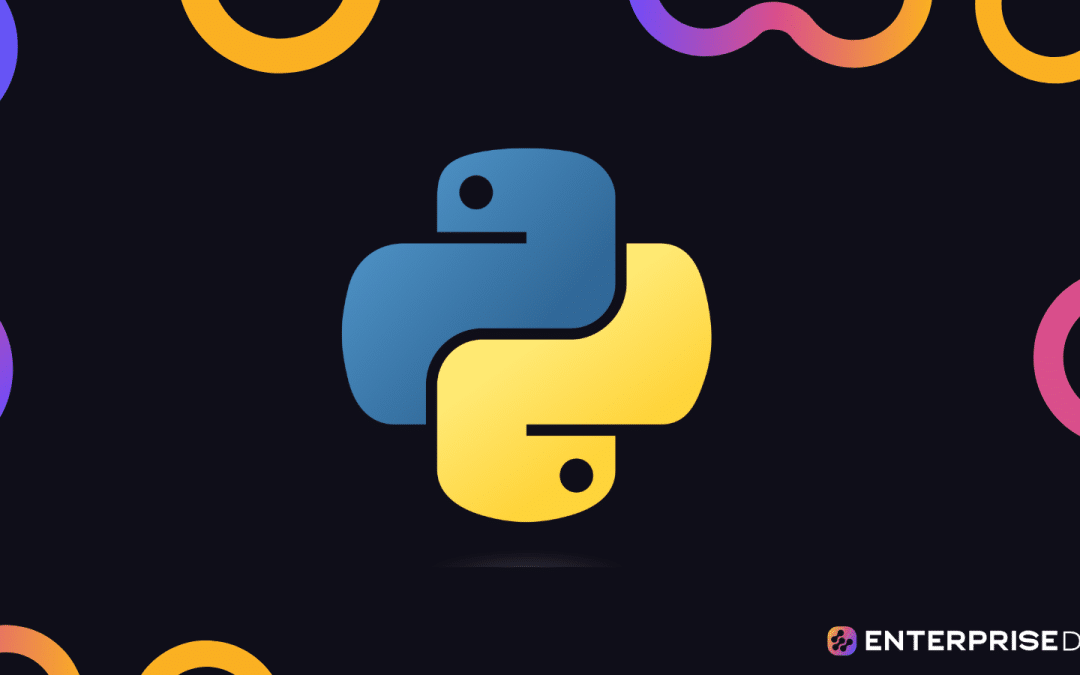Comprehensive Guide to Effectively Performing Exploratory Data Analysis (EDA) Using Python
Introduction to Exploratory Data Analysis
Exploratory Data Analysis (EDA) is a crucial step in the data science workflow. Its primary objective is to understand the dataset, discover patterns, identify anomalies, and check assumptions with the help of summary statistics and graphical representations.
Prerequisites
Ensure you have the following Python libraries installed:
- pandas
- numpy
- matplotlib
- seaborn
You can install these libraries using pip:
pip install pandas numpy matplotlib seaborn
1. Setting Up the Environment
Here’s a basic setup to start your EDA process:
# Import necessary libraries
import pandas as pd
import numpy as np
import matplotlib.pyplot as plt
import seaborn as sns
# Configure visualization options
sns.set(style="whitegrid")
plt.rcParams['figure.figsize'] = (10, 6)
# Load the dataset
df = pd.read_csv('your_dataset.csv')
2. Viewing the Dataset
First, inspect the basic structure and content of the dataset:
# Display the first few rows of the dataset
print("First 5 rows:")
print(df.head())
# Display the last few rows of the dataset
print("Last 5 rows:")
print(df.tail())
# Display the structure
print("DataFrame Info:")
df.info()
3. Summary Statistics
Generate summary statistics to quickly understand the central tendencies and distribution of the numerical variables:
# Summary of numerical columns
print("Summary statistics:")
print(df.describe(include=[np.number]))
# Summary of categorical columns
print("Summary statistics for categorical columns:")
print(df.describe(include=[np.object, pd.CategoricalDtype]))
4. Checking for Missing Values
Identifying missing values is essential to decide on further actions like imputation or deletion:
# Check for missing values
print("Missing values in each column:")
print(df.isnull().sum())
5. Univariate Analysis
Visualize the distribution of individual variables using histograms and box plots:
# Histogram for a numerical column
df['numerical_column'].hist(bins=30)
plt.title('Histogram of Numerical Column')
plt.xlabel('Value')
plt.ylabel('Frequency')
plt.show()
# Boxplot for a numerical column
sns.boxplot(x=df['numerical_column'])
plt.title('Boxplot of Numerical Column')
plt.show()
# Count plot for a categorical column
sns.countplot(x=df['categorical_column'])
plt.title('Count Plot of Categorical Column')
plt.show()
6. Bivariate Analysis
Examine relationships between pairs of variables using scatter plots and correlation matrices:
# Scatter plot between two numerical columns
sns.scatterplot(data=df, x='numerical_column1', y='numerical_column2')
plt.title('Scatter Plot')
plt.show()
# Correlation matrix heatmap
corr_matrix = df.corr()
sns.heatmap(corr_matrix, annot=True, cmap='coolwarm', linewidths=0.5)
plt.title('Correlation Matrix Heatmap')
plt.show()
Conclusion
This section provided a foundation in EDA, introducing basic steps to start analyzing your dataset. After completing this guide, you should be able to set up your environment, inspect data, generate summary statistics, and perform basic visualizations.
Setting Up Your Python Environment
To effectively perform Exploratory Data Analysis (EDA) using Python, you need a robust and well-configured setup of your Python environment. Below are the steps to set up your Python environment along with code snippets that will ensure you have all the necessary tools and libraries for EDA.
1. Install Python
Make sure Python is installed on your machine. You can download and install Python from the official Python website. Verify the installation by running:
python --version
You should see the Python version printed in the terminal.
2. Set Up a Virtual Environment
Creating a virtual environment allows you to isolate your project dependencies. Use the following commands to set it up:
# Create a virtual environment named 'eda_env'
python -m venv eda_env
# Activate the virtual environment
# On Windows
eda_env\Scripts\activate
# On macOS/Linux
source eda_env/bin/activate
3. Install Required Libraries
Once your virtual environment is activated, you need to install essential libraries for EDA. Create a requirements.txt file with the following content:
pandas
numpy
matplotlib
seaborn
jupyterlab
scipy
Use the following command to install these libraries:
pip install -r requirements.txt
4. Initialize a Jupyter Notebook
Jupyter Notebooks are beneficial for EDA as they allow you to combine code execution with visualization and narrative text. Start the Jupyter Notebook server:
jupyter lab
This will open JupyterLab in your web browser where you can start creating notebooks.
5. Verify the Environment
In your Jupyter Notebook, create a new Python notebook and run the following code to verify your environment setup:
import pandas as pd
import numpy as np
import matplotlib.pyplot as plt
import seaborn as sns
from scipy import stats
# Print library versions to confirm installation
print(f"Pandas version: {pd.__version__}")
print(f"NumPy version: {np.__version__}")
print(f"Matplotlib version: {plt.__version__}")
print(f"Seaborn version: {sns.__version__}")
print(f"SciPy version: {stats.__version__}")
# Test a basic plot
data = np.random.randn(100)
plt.figure(figsize=(8, 6))
sns.histplot(data, kde=True)
plt.title("Sample Histogram")
plt.show()
This script will import the essential libraries and create a simple histogram plot to ensure that everything is working correctly.
6. Project Structure
Organize your project directory to keep your code and data organized. A suggested structure is:
your_project_name/
??? data/
? ??? raw/
? ??? processed/
??? notebooks/
? ??? exploratory_data_analysis.ipynb
??? scripts/
? ??? data_preprocessing.py
??? requirements.txt
??? README.md
This setup will provide a clean and manageable workspace for your EDA project.
By following these steps, you will have a robust Python environment set up for performing effective Exploratory Data Analysis using best practices and powerful tools.
3. Data Collection and Cleaning Techniques
Data Collection
In the real world, data collection might come from multiple sources like databases, CSV files, Excel files, APIs, etc. Below, you’ll find an example of how to collect data from a CSV file and an API.
Collecting Data from a CSV File
import pandas as pd
# Load the CSV file into a DataFrame
file_path = 'path_to_your_file.csv'
df_csv = pd.read_csv(file_path)
Collecting Data from an API
import requests
import pandas as pd
# API endpoint
url = 'https://api.example.com/data'
# Send GET request
response = requests.get(url)
# Check if the request was successful
if response.status_code == 200:
data = response.json()
df_api = pd.DataFrame(data)
else:
print('Failed to retrieve data:', response.status_code)
Data Cleaning
After collecting the data, it’s crucial to clean it to ensure a smooth EDA process. The following steps will often be involved in data cleaning:
- Handling missing values
- Removing duplicates
- Data type conversion
- Removing/handling outliers
- Standardizing data formats
Handling Missing Values
Dropping Missing Values
# Drop rows with any missing values
df_cleaned = df_csv.dropna()
Filling Missing Values
# Fill missing values with the mean of the column
df_cleaned = df_csv.fillna(df_csv.mean())
Removing Duplicates
# Remove duplicate rows
df_cleaned = df_cleaned.drop_duplicates()
Data Type Conversion
# Convert column 'date' to datetime
df_cleaned['date'] = pd.to_datetime(df_cleaned['date'])
# Convert 'price' column to float
df_cleaned['price'] = df_cleaned['price'].astype(float)
Removing/Handling Outliers
# Define a function to remove outliers based on Z-score
from scipy import stats
def remove_outliers(df, col):
z_scores = stats.zscore(df[col])
abs_z_scores = abs(z_scores)
filtered_entries = (abs_z_scores < 3).all(axis=1)
return df[filtered_entries]
df_cleaned = remove_outliers(df_cleaned, ['price'])
Standardizing Data Formats
# Convert column 'category' to lowercase
df_cleaned['category'] = df_cleaned['category'].str.lower()
# Strip any leading/trailing whitespace from text columns
df_cleaned['category'] = df_cleaned['category'].str.strip()
Putting It All Together:
import pandas as pd
import requests
from scipy import stats
# Load the CSV file into a DataFrame
file_path = 'path_to_your_file.csv'
df_csv = pd.read_csv(file_path)
# Collecting Data from an API
url = 'https://api.example.com/data'
response = requests.get(url)
if response.status_code == 200:
data = response.json()
df_api = pd.DataFrame(data)
else:
print('Failed to retrieve data:', response.status_code)
# Assuming you are concatenating data from CSV and API
df = pd.concat([df_csv, df_api], ignore_index=True)
# Clean the data
df = df.dropna() # Handle missing values
df = df.drop_duplicates() # Remove duplicates
df['date'] = pd.to_datetime(df['date']) # Convert to correct data types
df['price'] = df['price'].astype(float)
df = remove_outliers(df, ['price']) # Remove outliers
df['category'] = df['category'].str.lower().str.strip() # Standardize formats
# Now df is clean and ready for EDA
The above implementation shows practical techniques for data collection and cleaning that can be directly applied in a Python environment.
Understanding and Handling Missing Data
Introduction
Handling missing data is a crucial part of any data analysis process. It can impact the performance and validity of your model. This section provides practical ways to detect and handle missing data using Python.
Detecting Missing Data
To identify missing data, you can use functions from pandas which is a powerful data manipulation library in Python.
import pandas as pd
# Load your dataset
df = pd.read_csv('your_dataset.csv')
# Summary of missing values
missing_values_summary = df.isnull().sum()
print(missing_values_summary)
# Percentage of missing values
missing_percentage = (df.isnull().mean() * 100).round(2)
print(missing_percentage)
# Visual summary
import seaborn as sns
import matplotlib.pyplot as plt
plt.figure(figsize=(10, 6))
sns.heatmap(df.isnull(), cbar=False, cmap='viridis')
plt.title('Heatmap of Missing Values')
plt.show()
Handling Missing Data
1. Removing Missing Data
Sometimes, it makes sense to simply remove data with missing values.
# Remove rows with any missing values
df_dropna = df.dropna()
# Remove columns with any missing values
df_dropna_columns = df.dropna(axis=1)
2. Filling Missing Data
You can fill in missing data with different strategies such as mean, median, mode, or a specific value.
Filling with Specific Value:
# Fill missing values with 0
df_fillna = df.fillna(0)
Filling with Mean/Median/Mode:
# Fill numerical columns with mean
df_filled_mean = df.fillna(df.mean())
# Fill numerical columns with median
df_filled_median = df.fillna(df.median())
# Fill categorical columns with mode
for column in df.select_dtypes(include=['object']).columns:
df[column].fillna(df[column].mode()[0], inplace=True)
Forward Fill / Backward Fill:
# Forward fill
df_ffill = df.fillna(method='ffill')
# Backward fill
df_bfill = df.fillna(method='bfill')
Advanced Techniques
For more sophisticated imputation, you can use machine learning algorithms.
Example using Scikit-Learn’s IterativeImputer:
from sklearn.experimental import enable_iterative_imputer
from sklearn.impute import IterativeImputer
iterative_imputer = IterativeImputer()
df_imputed = iterative_imputer.fit_transform(df)
# Convert back to DataFrame
df_imputed = pd.DataFrame(df_imputed, columns=df.columns)
Conclusion
Missing data can be handled in various ways depending on the nature of your dataset and your analysis goals. The above methods provide practical implementations for detecting and handling missing data using Python, ensuring that you maintain the quality of your analysis.
Data Visualization with Matplotlib and Seaborn
Importing Required Libraries
import matplotlib.pyplot as plt
import seaborn as sns
import pandas as pd
import numpy as np
Initial Steps
Ensure you have your data ready, as this will be the starting point for the visualizations. Below is an example using a generic DataFrame df.
# Example DataFrame
df = pd.DataFrame({
'A': np.random.randn(100),
'B': np.random.randn(100),
'C': np.random.randn(100),
'D': np.random.randn(100),
'Category': np.random.choice(['Category1', 'Category2'], 100)
})
Matplotlib Visualizations
Line Plot
plt.figure(figsize=(10, 6))
plt.plot(df['A'], label='Line A')
plt.plot(df['B'], label='Line B')
plt.xlabel('Index')
plt.ylabel('Values')
plt.title('Line Plot for A and B')
plt.legend()
plt.show()
Scatter Plot
plt.figure(figsize=(10, 6))
plt.scatter(df['A'], df['B'], c='blue', alpha=0.5)
plt.xlabel('A')
plt.ylabel('B')
plt.title('Scatter Plot between A and B')
plt.show()
Histogram
plt.figure(figsize=(10, 6))
plt.hist(df['A'], bins=30, alpha=0.5, label='A')
plt.hist(df['B'], bins=30, alpha=0.5, label='B')
plt.xlabel('Value')
plt.ylabel('Frequency')
plt.title('Histogram of A and B')
plt.legend()
plt.show()
Seaborn Visualizations
Pair Plot
sns.pairplot(df)
plt.suptitle('Pair Plot of the DataFrame', y=1.02)
plt.show()
Box Plot
plt.figure(figsize=(10, 6))
sns.boxplot(x='Category', y='A', data=df)
plt.xlabel('Category')
plt.ylabel('A')
plt.title('Box Plot of A by Category')
plt.show()
Heatmap
plt.figure(figsize=(10, 6))
correlation_matrix = df.corr()
sns.heatmap(correlation_matrix, annot=True, cmap='coolwarm')
plt.title('Heatmap of Correlation Matrix')
plt.show()
Count Plot
plt.figure(figsize=(10, 6))
sns.countplot(x='Category', data=df)
plt.xlabel('Category')
plt.ylabel('Count')
plt.title('Count Plot of Categories')
plt.show()
These examples cover a variety of common visualizations that can be used to explore and understand your data. Each plot provides unique insights and can help highlight different aspects of the dataset.
Descriptive Statistics and Summary Measures in Python
Import Necessary Libraries
import pandas as pd
import numpy as np
Load Your Data
# Assume we have a file called 'data.csv'
df = pd.read_csv('data.csv')
General Overview of the Data
# Display the first few rows of the data
print(df.head())
# Display basic information about the dataset
print(df.info())
# Display summary statistics for numerical columns
print(df.describe())
# Display summary statistics for categorical columns
print(df.describe(include=[object]))
Descriptive Statistics Functions
# Mean, Median, Mode for a specific column
column_name = 'your_column'
mean_value = df[column_name].mean()
median_value = df[column_name].median()
mode_value = df[column_name].mode()[0]
print(f"Mean: {mean_value}, Median: {median_value}, Mode: {mode_value}")
# Variance and Standard Deviation
variance_value = df[column_name].var()
std_dev_value = df[column_name].std()
print(f"Variance: {variance_value}, Standard Deviation: {std_dev_value}")
# Skewness and Kurtosis
skewness_value = df[column_name].skew()
kurtosis_value = df[column_name].kurt()
print(f"Skewness: {skewness_value}, Kurtosis: {kurtosis_value}")
Summary Statistics for the Entire DataFrame
# Custom function to compute summary statistics
def summary_statistics(dataframe):
summary = pd.DataFrame()
summary['Mean'] = dataframe.mean()
summary['Median'] = dataframe.median()
summary['Mode'] = dataframe.mode().iloc[0]
summary['Variance'] = dataframe.var()
summary['Standard Deviation'] = dataframe.std()
summary['Skewness'] = dataframe.skew()
summary['Kurtosis'] = dataframe.kurt()
return summary
# Apply the function to the DataFrame
summary_stats = summary_statistics(df.select_dtypes(include=[np.number]))
print(summary_stats)
Additional Useful Statistics
# Minimum and Maximum values
min_values = df.min()
max_values = df.max()
print(f"Minimum values:\n{min_values}\n")
print(f"Maximum values:\n{max_values}\n")
# Quantiles
quantiles = df.quantile([0.25, 0.5, 0.75])
print(f"Quantiles:\n{quantiles}\n")
Handling Outliers
# Interquartile Range (IQR) to detect outliers for a specific column
Q1 = df[column_name].quantile(0.25)
Q3 = df[column_name].quantile(0.75)
IQR = Q3 - Q1
lower_bound = Q1 - 1.5 * IQR
upper_bound = Q3 + 1.5 * IQR
outliers = df[(df[column_name] < lower_bound) | (df[column_name] > upper_bound)]
print(f"Outliers in {column_name}:\n{outliers}")
This comprehensive implementation covers how to compute and display descriptive statistics and summary measures using Python on your DataFrame. You can expand and apply these techniques to any dataset as needed.
7. Exploratory Data Analysis with Pandas
import pandas as pd
# Load the data
df = pd.read_csv('your_dataset.csv')
# 1. Preview the Data
print("Data Preview:")
print(df.head())
# 2. Data Info
print("\nData Info:")
print(df.info())
# 3. Check for Missing Values
print("\nMissing Values:")
print(df.isnull().sum())
# 4. General Descriptive Statistics
print("\nDescriptive Statistics:")
print(df.describe())
# 5. Unique Values for Categorical Features
print("\nUnique Values for Categorical Features:")
categorical_features = df.select_dtypes(include=['object']).columns
for col in categorical_features:
print(f"{col}: {df[col].unique()}")
# 6. Correlation Matrix
print("\nCorrelation Matrix:")
print(df.corr())
# 7. Detecting Outliers
from scipy import stats
print("\nOutlier Detection:")
z_scores = stats.zscore(df.select_dtypes(include=[float, int]))
abs_z_scores = abs(z_scores)
outliers = (abs_z_scores > 3).all(axis=1)
print("Outliers detected (rows):")
print(df[outliers])
# 8. Value Counts for Key Features
print("\nValue Counts for Key Features:")
for col in ['important_feature_1', 'important_feature_2']: # Replace with your key features
print(f"Value counts for {col}:")
print(df[col].value_counts())
# 9. Grouped Statistics
print("\nGrouped Statistics:")
grouped = df.groupby('categorical_feature') # Replace with your categorical feature
print(grouped['numerical_feature'].agg(['mean', 'median', 'std']))
# 10. Further Exploration
# Example: Checking distribution of numerical features
import matplotlib.pyplot as plt
df.hist(bins=30, figsize=(15, 10))
plt.suptitle("Distribution of Numerical Features")
plt.show()
Summary of Steps
- Preview the Data: Look at the first few rows to understand the structure.
- Data Info: Get a concise summary of the DataFrame.
- Check for Missing Values: Identify columns with missing values.
- General Descriptive Statistics: Summary statistics for numerical columns.
- Unique Values for Categorical Features: Examine unique values in categorical columns.
- Correlation Matrix: Check correlations between numerical columns.
- Detecting Outliers: Use Z-scores to identify outlier rows.
- Value Counts for Key Features: Count occurrences of values in specified columns.
- Grouped Statistics: Aggregate statistics based on a categorical feature.
- Further Exploration: Plot distributions of numerical features for deeper insights.
Apply each step systematically to unearth valuable patterns and relationships within the dataset.
Univariate and Bivariate Analysis
1. Univariate Analysis
Univariate analysis involves examining each variable individually. The best practice is to understand the distribution, central tendency, and spread of the data.
Practical Implementation:
import numpy as np
import pandas as pd
import matplotlib.pyplot as plt
import seaborn as sns
# Load your dataset
# Assuming `df` is your DataFrame
df = pd.read_csv('your_dataset.csv')
# Summary statistics
summary_stats = df.describe()
print(summary_stats)
# Distribution of a single variable (numerical)
sns.histplot(df['numerical_column'])
plt.title('Distribution of Numerical Column')
plt.xlabel('Numerical Column')
plt.ylabel('Frequency')
plt.show()
# Distribution of a single variable (categorical)
sns.countplot(x='categorical_column', data=df)
plt.title('Count of Categorical Column')
plt.xlabel('Categorical Column')
plt.ylabel('Count')
plt.show()
2. Bivariate Analysis
Bivariate analysis involves the simultaneous analysis of two variables, typically to discover relationships. This can be done using scatter plots, bar plots, or correlation matrices.
Practical Implementation:
# Scatter plot for two numerical variables
sns.scatterplot(x='numerical_column_1', y='numerical_column_2', data=df)
plt.title('Scatter Plot of Numerical Column 1 vs Numerical Column 2')
plt.xlabel('Numerical Column 1')
plt.ylabel('Numerical Column 2')
plt.show()
# Box plot for a numerical vs categorical variable
sns.boxplot(x='categorical_column', y='numerical_column', data=df)
plt.title('Box Plot of Numerical Column by Categorical Column')
plt.xlabel('Categorical Column')
plt.ylabel('Numerical Column')
plt.show()
# Correlation matrix for numerical variables
correlation_matrix = df.corr()
print(correlation_matrix)
# Heatmap of the correlation matrix
sns.heatmap(correlation_matrix, annot=True, cmap='coolwarm', linewidths=0.5)
plt.title('Heatmap of Correlation Matrix')
plt.show()
Now you can apply these practical implementations to perform univariate and bivariate analysis on your dataset effectively. This will help in better understanding the data and revealing any possible relationships or patterns.
Correlation and Causation Analysis
In this section, we will focus on practical implementation steps to analyze correlation and causation using Python. We will use Pandas for data manipulation, Seaborn and Matplotlib for visualization, and Statsmodels for statistical analysis.
Correlation Analysis
Step 1: Import Libraries
import pandas as pd
import seaborn as sns
import matplotlib.pyplot as plt
import statsmodels.api as sm
import numpy as np
Step 2: Load Data
For our example, assume you have a dataset named data.csv.
df = pd.read_csv('data.csv')
Step 3: Calculate Correlation Matrix
Use the .corr() method to calculate the correlation coefficients.
correlation_matrix = df.corr()
Step 4: Visualize Correlation Matrix
Use a heatmap to visualize the correlation matrix.
plt.figure(figsize=(10,8))
sns.heatmap(correlation_matrix, annot=True, cmap='coolwarm', fmt=".2f")
plt.title('Correlation Matrix')
plt.show()
Causation Analysis
Correlation does not imply causation. To explore causation, we use statistical methods such as Linear Regression.
Step 1: Define Variables
Assuming x is the independent variable and y is the dependent variable.
X = df['x']
y = df['y']
Step 2: Add Constant
Add a constant to the independent variable set for statistical purposes.
X = sm.add_constant(X)
Step 3: Fit Linear Regression Model
model = sm.OLS(y, X).fit()
Step 4: Summarize the Model
Get a summary of the regression model to analyze the significance and coefficients.
print(model.summary())
Step 5: Analyze Residuals
Check the distribution of residuals to validate the assumptions of linear regression.
residuals = model.resid
sns.histplot(residuals, kde=True)
plt.title('Residuals Distribution')
plt.show()
Step 6: Visualize Regression Line
plt.figure(figsize=(10,6))
sns.regplot(x='x', y='y', data=df, line_kws={"color":"r","alpha":0.7,"lw":2})
plt.title('Regression Line')
plt.show()
Step 7: Conduct Granger Causality Test (if applicable)
For time series data, you might want to conduct a Granger Causality Test.
from statsmodels.tsa.stattools import grangercausalitytests
# Assume 'data' contains time series data with columns 'x' and 'y'
grangercausalitytests(data[['x', 'y']], maxlag=5)
This test checks if past values of one variable contain information that helps predict another variable.
Conclusion
This section provided a thorough, practical implementation of correlation and causation analysis using Python. Ensure you interpret the results correctly and understand the implications of the statistical outputs.
Reporting and Communicating EDA Results
After conducting Exploratory Data Analysis (EDA), effectively reporting and communicating your results is crucial. It ensures that findings are easily understood by stakeholders. Below is a practical implementation highlighting key methods to succinctly report and communicate your EDA results using Python.
1. Generate Summary Reports
1.1. Summary Statistics
You can use Pandas to create a summary table of your dataset’s key statistics.
import pandas as pd
# Assuming df is your DataFrame
summary_stats = df.describe().transpose()
summary_stats.to_csv('summary_statistics.csv') # Save to a CSV file
print(summary_stats)
2. Visual Reports
Visualizations are an effective way to communicate your findings. You can use Matplotlib and Seaborn for generating various plots.
2.1. Histograms
import matplotlib.pyplot as plt
df.hist(figsize=(10, 8))
plt.tight_layout()
plt.savefig('histograms.png') # Save the figure
plt.show()
2.2. Correlation Heatmap
import seaborn as sns
plt.figure(figsize=(12, 10))
correlation_matrix = df.corr()
sns.heatmap(correlation_matrix, annot=True, cmap='coolwarm', linewidths=0.5)
plt.title('Correlation Matrix Heatmap')
plt.savefig('correlation_heatmap.png') # Save the figure
plt.show()
2.3. Boxplots
plt.figure(figsize=(10, 8))
sns.boxplot(data=df)
plt.title('Boxplot of Variables')
plt.savefig('boxplot.png') # Save the figure
plt.show()
3. Detailed EDA Report using Pandas Profiling
For a comprehensive and interactive EDA report, you can use pandas_profiling.
from pandas_profiling import ProfileReport
# Generate the report
profile = ProfileReport(df, title='EDA Report', explorative=True)
profile.to_file('eda_report.html') # Save as an HTML file
4. Creating a Jupyter Notebook Report
Using Jupyter Notebooks to combine narrative text, code, and visualizations is a powerful way to report your findings.
# In a Jupyter Notebook cell
# Imports and initial setup
import pandas as pd
import matplotlib.pyplot as plt
import seaborn as sns
from pandas_profiling import ProfileReport
# Load and explore the data
df = pd.read_csv('your_data.csv')
# Display summary statistics
print(df.describe().transpose())
# Generate and display histograms
df.hist(figsize=(10, 8))
plt.tight_layout()
plt.show()
# Generate and display correlation heatmap
plt.figure(figsize=(12, 10))
sns.heatmap(df.corr(), annot=True, cmap='coolwarm', linewidths=0.5)
plt.title('Correlation Matrix Heatmap')
plt.show()
# Generate an interactive EDA report
profile = ProfileReport(df, title='EDA Report', explorative=True)
profile
# Save the report
profile.to_file('eda_report.html')
5. Automating Report Generation in Python Script
eda_report.py
# eda_report.py
import pandas as pd
import matplotlib.pyplot as plt
import seaborn as sns
from pandas_profiling import ProfileReport
def generate_eda_report(data_path):
df = pd.read_csv(data_path)
# Summary Statistics
summary_stats = df.describe().transpose()
summary_stats.to_csv('summary_statistics.csv')
# Histograms
df.hist(figsize=(10, 8))
plt.tight_layout()
plt.savefig('histograms.png')
# Correlation Heatmap
plt.figure(figsize=(12, 10))
sns.heatmap(df.corr(), annot=True, cmap='coolwarm', linewidths=0.5)
plt.title('Correlation Matrix Heatmap')
plt.savefig('correlation_heatmap.png')
# Boxplot
plt.figure(figsize=(10, 8))
sns.boxplot(data=df)
plt.title('Boxplot of Variables')
plt.savefig('boxplot.png')
# Pandas Profiling Report
profile = ProfileReport(df, title='EDA Report', explorative=True)
profile.to_file('eda_report.html')
if __name__ == "__main__":
generate_eda_report('your_data.csv')
Execute the script with:
python eda_report.py
By the end of this process, you will have multiple artifacts (summary_statistics.csv, histograms.png, correlation_heatmap.png, boxplot.png, eda_report.html) to communicate your EDA results effectively.
Final Thoughts
Exploratory Data Analysis (EDA) is a crucial step in the data science workflow that allows analysts and data scientists to gain valuable insights from their datasets. Throughout this comprehensive guide, we’ve covered the essential aspects of performing EDA using Python, from setting up the environment to advanced analysis techniques and effective reporting.
By mastering the tools and techniques discussed in this blog post, including data loading, cleaning, visualization, and statistical analysis, you’ll be well-equipped to tackle complex datasets and uncover meaningful patterns. Remember that EDA is an iterative process, and the insights gained often lead to new questions and further exploration.
As you apply these best practices in your projects, keep in mind that the goal of EDA is not just to generate statistics and plots, but to develop a deep understanding of your data. This understanding will inform your subsequent modeling decisions and help you communicate your findings effectively to stakeholders.
Whether you’re a beginner or an experienced data professional, continual practice and experimentation with different datasets will help you refine your EDA skills. As the field of data science evolves, stay curious and open to learning new techniques and tools that can enhance your exploratory analysis capabilities.
By leveraging the power of Python and its rich ecosystem of data analysis libraries, you’re now ready to dive deep into your data, ask insightful questions, and extract valuable knowledge that can drive informed decision-making in your organization.








